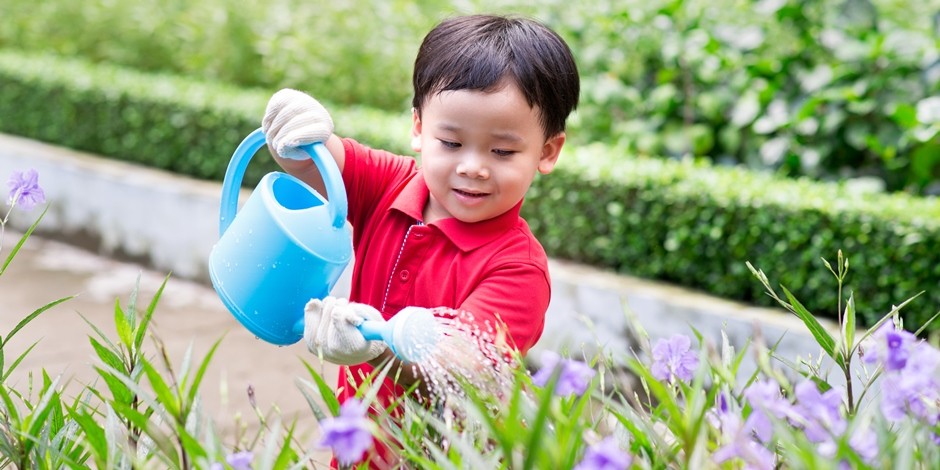Lessons from the field: Local community gardens
On a brisk day in March, Boulder’s Growing Gardens’ fields near Broadway and Iris are little more than grass and bare dirt, but inside the greenhouse it’s bustling. Executive Director Ramona Clark and a half-dozen interns and staff are moving newly seeded flats to heated boxes for germination; they’re spot-watering and transplanting thousands of tiny seedlings to foster sturdy root systems. The arugula sprouts look like miniature clovers, yet by May they and 30,000 other seedlings will be planted in fields throughout the city, donated to low-income households or sold to the community through Growing Gardens’ annual fundraiser, which last year raised approximately $65,000 for the nonprofit. That money supports GG’s facilities, staff, and numerous outreach and education programs.
 Growing Together
Growing Together
“Everyone should know how to grow things,” says Clark. “When you grow a tomato and then buy one at the grocery store, you understand what it took for a farmer to produce that food. It builds appreciation.”
Clark started Growing Gardens 15 years ago in Boulder County with the mission of “cultivating community through urban agriculture.” Since then, interest in urban agriculture has skyrocketed. In 2011, the USDA-funded Community Food Projects alone generated 1.5 million pounds of fresh produce nationwide.
Thousands of Boulder County residents benefit directly from Growing Gardens’ programs, which include 10 community gardens where individuals and families rent plots seasonally; the Children’s Peace Garden school programs and summer camps, which provide hands-on education to more than 3,000 children per year; the Cultiva Youth Project, a youth-run garden-to-market program; and a horticultural therapy program for seniors and disabled citizens. “We teach people to grow, harvest, cook, make crafts and preserve foods, but always with a sense of community,” says Clark. “Gardening together is a real equalizer,” she says, regarding the diversity of socioeconomic backgrounds, ages, ethnicities and life situations of the people who participate. Growing Gardens assists as many as 150 low-income families yearly to plant and cook with foods produced in their own gardens.
This spring, Growing Gardens will plant 200 heirloom fruit trees—varieties that thrive in Front Range yards—near its greenhouse not only for the delicious fruit, but also to create fresh opportunities for community learning. “We want to be the hub for urban farming, to be a public farm,” Clark says.
Teach Your Children Well
“People want to develop a stronger relationship with their food source,” says Bryce Brown, founder of Growe Foundation, the organization that runs Boulder Valley School District’s (BVSD)Garden to Table Program that reaches 8,000 kids at 18 elementary schools. “There’s a greater focus on the connection between our health, the planet’s health and food.” Brown sees community organizations like Growe and Growing Gardens—along with BVSD’s School Food Project with its emphasis on fresh, wholesome foods—as synergistic parts of local efforts to inspire healthier eating and dietary choices that lessen environmental impact.

“For many, this is their first job,” Clark explains, one that gives them so much more than a job at a fast-food chain. The kids are paid, but more importantly, Clark says, they gain self-worth. “If they have an idea, something they want to grow or try, then we help them accomplish it, which gives them confidence,” says Clark. Connor Murphy, the market garden grower, loves that the program teaches kids to “lead with their authentic selves.”
Sharing is Caring
In the greenhouse, Clark tends to a few 3-inch, fuzzy-stemmed heirloom tomato plants set in a warm corner. Their name tags suggest an authentic and diverse world of their own: Thessaloniki, Stupice, Opalka, Big Rainbow. These are some of Clark’s favorites because, she says, planting tomatoes as a volunteer gardener in Seattle years before she founded Growing Gardens changed her life. “Taking the tomatoes by the stem and gently packing dirt around them, I realized that this was my life’s calling—that plants have something to communicate. I wanted to give people that experience.”
Check out this video from Growing Gardens in Boulder.


 Growing Together
Growing Together